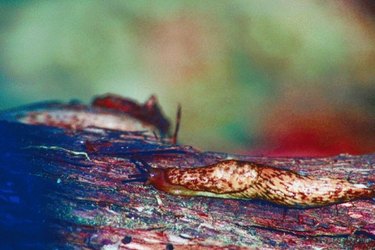
Yeast is an active microorganism that can be used in vegetable gardens for pest control, as an aid to growth, or to fuel decomposition of garden waste. Yeast may be used in different growing mediums, as well as in different forms, and using it can be as easy as opening a cold beer.
Slug Catching
Video of the Day
While gardeners have been putting shallow pans of beer in their vegetable gardens to make traps for slugs, they may not know that it is the yeast in the beer that attracts the slugs. To make a slug trap, dissolve 1 tbsp. of active dry yeast and 2 tbsp. of sugar in 3 cups warm water. Place this liquid in a shallow pan with a lip at least 1/2 inch tall. The slugs will be attracted to the yeast and crawl into the pan and then drown.
Video of the Day
Carbon Dioxide Factor
Yeast naturally produces carbon dioxide gas, which is an important gas for plants. Hydroponic gardeners can make a yeast and sugar mix and harvest the carbon dioxide gas that is produced by the yeast. To make your own carbon dioxide factory, dissolve 1 lb. of sugar in warm water in a gallon milk jug, then add one packet of dry active yeast. Drill a small hole in the lid of the milk jug and pass tubing through the hole so that the end hangs above the water line inside the jug. The yeast will eat the sugar and produce carbon dioxide, which will travel up the tubing and to your plants.
Yeast in Compost
As an active microorganism, yeast may help break down vegetable matter in compost. The process of composting with yeast and other microorganisms originated in Japan, and it is called "bokashi" composting. In bokashi composting, kitchen scraps and other organic waste is placed in a small container with a lid and sprinkled with a special bokashi "bran" that contains yeast and other microorganisms like lactic acid bacteria that break down the vegetable matter to create a rich compost for gardening.
Fertilizer
Yeast can also be added to an organic fertilizer mix in order to increase this beneficial microorganism into the soil. An organic fertilizer recipe includes animal dung, brewer's yeast, seaweed, humate, meal such as corn meal or alfalfa meal and molasses. Many organic farmers also obtain used brewer's yeast and mash from microbreweries to add to their compost and enrich the soil.